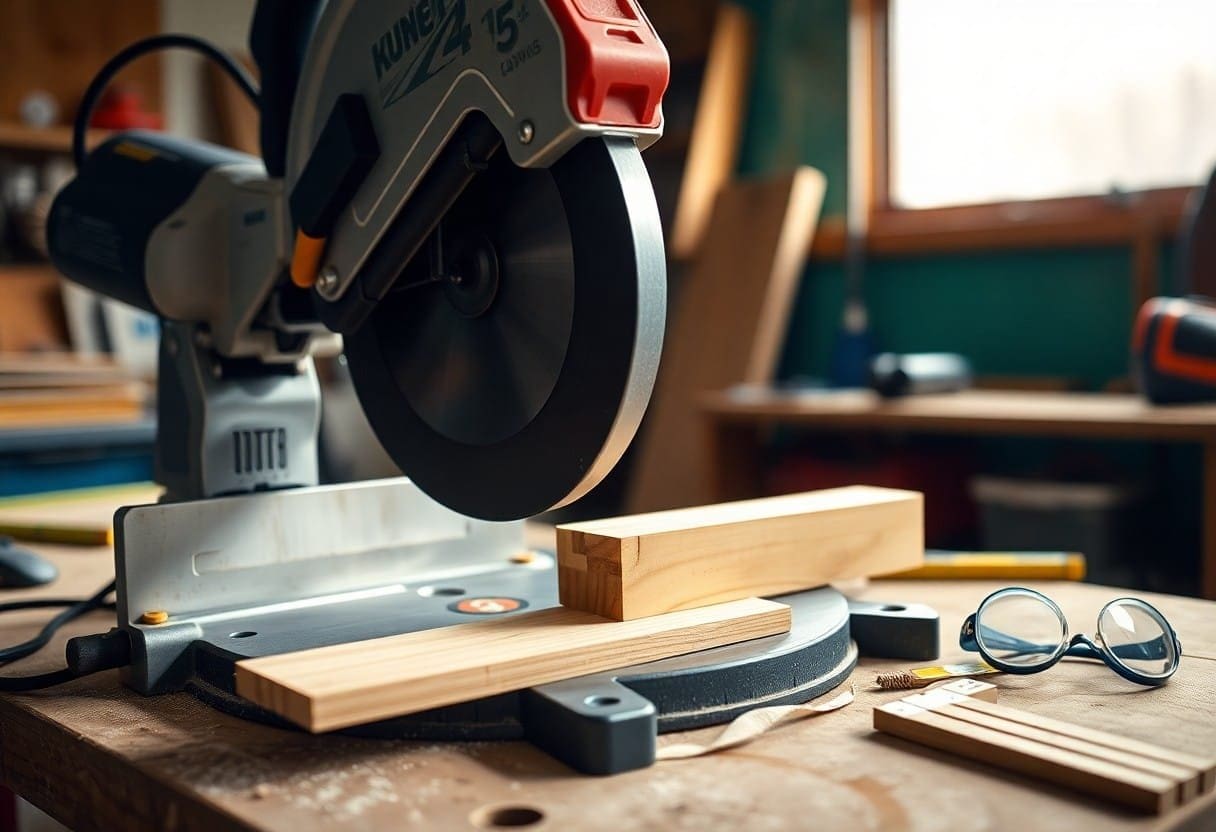There’s a straightforward way to achieve precise angle cuts using a miter saw, an vital tool for any woodworking project. Whether you’re working on picture frames, crown molding, or furniture, knowing how to properly cut angles will enhance the accuracy and quality of your work. In this guide, you will learn the steps and tips necessary for cutting angles effectively with your miter saw.
First, you need to ensure your work area is clean and safe. Make sure your miter saw is placed on a stable surface, with adequate space around it. Position the saw at eye level and plug it into a power source to get it ready for use. Safety is paramount; wear safety goggles to protect your eyes and ear protection if you’re working in a noisy environment.
Next, familiarize yourself with the miter saw features. You’ll notice a miter scale on the saw, allowing you to set specific angles for your cuts. Common angles include 0° (for straight cuts), 22.5°, 30°, and 45° (mostly used for corners). You may also see a bevel adjustment, which allows you to tilt the blade for more complicated cuts.
Before making your cuts, measure the angle you need. You can often achieve this using a protractor or a speed square to mark the angle directly on your workpiece. If you’re working with existing corners, such as in a room or on pre-existing frames, make sure to measure the angle accurately from the existing surfaces. It’s a good strategy to mark your measurements on both sides of the wood for clarity.
Now, set your miter saw to the desired angle. Unlock the miter gauge, and rotate it to the chosen angle. When you have positioned it accurately, lock it back in place to ensure it does not move during cutting. If you’re making a bevel cut, adjust the tilt of the blade to your preferred angle as well.
To cut your workpiece, place it in the miter saw fence, ensuring it is flush against the back and firmly in place. Use clamps if necessary to secure your piece, so it doesn’t shift during the cut. Line up the blade just before your mark to ensure accuracy. Always make sure your hands are clear of the blade’s path before proceeding.
Before you initiate the cut, double-check that everything is aligned. Hold down the handle, and with a firm grip, power on the saw. Allow the blade to reach full speed before lowering it into the material for a clean, smooth cut. Be mindful of, pushing too hard can lead to jagged cuts, so let the saw do the work.
After you finish cutting, turn off the saw and wait for the blade to come to a complete stop before moving the wood. Inspect your cut for accuracy. If everything checks out, you can proceed with your project. Should you need to make adjustments, take your time measuring and cutting, as this ensures a better fit and finish for your work.
By following these steps, you can effectively cut angles with a miter saw, allowing you to create high-quality woodworking projects with precision.




